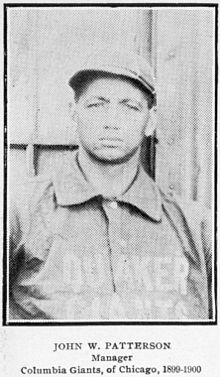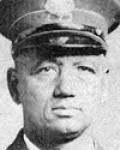On March 2, 1799, an Act of Congress made Detroit a port of entry.
Source : Detroit Historical Society of Michigan Facebook Page
In his only recorded speech as territorial representative to Congress, Father Gabriel Richard asked for $1,500 to build a road from Detroit to Chicago on March 2, 1824. His appeal was so eloquent that Congress doubled the amount. Born in France, Richard served as pastor of Detroit’s Ste. Anne Church and spent one term as Michigan’s non-voting territorial representative. Until the election of Father Robert Drinan from Massachusetts in 1970, Richard was the only priest to serve in Congress.
Father Richard was born in La Ville de Saintes, France and was ordained a priest in 1790. In 1792, he emigrated to Baltimore, Maryland. He taught at St. Mary’s College in Maryland and then was to do missionary work to the Native Americans in the Northwest Territory. He first ministered in what is now Kaskaskia, Illinois, and later in Detroit.
Kay Houston of The Detroit News wrote an article on Richard titled Father Gabriel Richard: Detroit’s pioneer priest. She credits Richard with:
* He was considered the “second founder” of Detroit.
* He was the first priest to serve in the U.S. Congress.
* He gave Detroit its first library.
* He brought first printing press west of the Alleghenies to Detroit.
* He published Detroit’s first newspaper.
* He co-founded the forerunner of the University of Michigan.
* He helped Michigan get its first good road from Detroit to Chicago.
* He co-founded the Michigan Historical Society.
This is quite the resume! Father Richard was an extraordinary individual who accomplished a lot. However, it is that first Catholic priest in Congress piece which seems to be his biggest claim to fame.
Father Richard was elected as a delegate to the House of Representatives for the 18th Congress. He served a single term, 1823-1825. He was an unsuccessful candidate for reelection in 1824 and he returned home to Detroit. Although as a one term non-voting member of Congress he probably had little impact, he nonetheless did something else no other Catholic priest had done before by serving in Congress.
Source : Michigan is Amazing
For more information about Father Gabriel Richard, see Kay Houston, “Father Gabriel Richard: Detroit’s pioneer priest”, Detroit News, July 19, 1997.
Governor Stevens T. Mason approved changing the name of the town of Bronson to Kalamazoo on this day.
Source : Michigan History, March/April 2017, p.8

Titus Bronson is considered the first pioneer of Kalamazoo, MI, although several traders lived on the land in the years before. Coming originally from Connecticut, Bronson arrived on June 21st, 1829. Bronson spent the summer and fall gearing up to create permanent residence before spending the winter in what is now Schoolcraft. That spring, Bronson returned to Ohio to gather his family and bring them back to Kalamazoo in June of 1830. Bronson bought land in present-day Downtown Kalamazoo.
On March 12, 1831 Bronson submitted the original plans for the village of Bronson to the county register’s office. Eventually, a courthouse, an academy, a jail and several churches were constructed. The academy and the jail are now the location of Bronson Park.
In March of 1836 Bronson was at odds with many members of the village. He was an outspoken man and was once fined for stealing a cherry tree. The growing number of villagers opposed to Bronson eventually got the village name changed from Bronson to Kalamazoo, named after the river that runs through the city. Bronson left Kalamazoo in 1836 and headed to Iowa. He died in 1853. Bronson’s name can be found throughout the city, including Bronson Park and Bronson Hospital.
Source : Kalamazoo and Titus Bronson section of Michigan Leader
In the Battle Creek of the early to mid-1900s, he was as constant as the sunrise.
John W. Patterson (March 2, 1872 – August 23, 1940) , known to everyone as Pat, could always be found at the intersection of Capital and Michigan avenues, known locally as “bank corners” because of the three banks on the four corners.
He was Battle Creek’s traffic cop in the days before signals, motioning traffic through in a ballet of gestures and gyrations. And always, it was said, with a smile on his face.
More than that, though, Patterson was also Battle Creek’s first African-American police officer, and before that, a well-known baseball player and coach.
But there was even more. Pattterson became, if not a friend, then a confidant of heavyweight boxing champ Jack Johnson, sheltering him on his trips through Battle Creek.
Patterson was born in Omaha, Neb., in 1872 and made his way to Michigan in 1895 when he became player/manager for the Page Fence Giants of Adrian, a prominent Negro League baseball team that barnstormed all over the country.

He also played semi-professional baseball in Philadelphia and New York City, even traveling to Havana, Cuba, with his team to play in a winter league.
In 1907, he came to Battle Creek and became head coach of the Battle Creek High School baseball team, winning a state title that same year.
In 1909, he became a patrolman with the Battle Creek Police Department in an era when, according to local historian Mary Butler, Battle Creek was a welcoming place for African-Americans.
But in 1917, when Camp Custer, which would later become Fort Custer, was created to train American soldiers for World War I, that changed.
“Camp Custer more than doubled the size of this town almost overnight,” Butler said.
And with that came an influx of soldiers, many from the south, who clashed often with the black residents.
Patterson saw what was happening and took a bold step, Butler said.
“He wrote a letter to the commander of Camp Custer where he said, ‘Your southern officers are bringing their attitude with them. They are bringing their segregationist attitude to this town.’ ” Butler said. “He must have had some standing in the community to do that. A young cop on the beat would not sit down and write a letter to a camp commander.”
Patterson was also known to have befriended the flamboyant African-American boxer Jack Johnson, who had enraged many white Americans by becoming heavyweight champion of the world in 1910.
Johnson made several trips through Battle Creek and was actually arrested in town on Jan. 14, 1913, with his white wife on a charge of violating the Mann Act which forbade “transporting women across state lines for immoral purposes.”
On several of Johnson’s trips through Battle Creek, Patterson would pick him up at the train station and house him in his own home so officials couldn’t find him. Then he’d usually leave unobtrusively the next day.
“He was trying to defuse the situation,” Laws said. “Being a police officer was more than just being a force of law. You needed to be a go-between for people and he was.”
Through his 39-year career as a policeman, Patterson was always remembered for his cheerful disposition and his desire to help wherever and whoever he could.
But in 1940, while assisting in the capture of an escaped patient from the Veterans Administration facility, Patterson suffered a rupture in his groin that eventually became infected. He died at age 68.
On December 31, 1999, a portion of East State Street adjacent to the department headquarters was renamed “John W. Patterson Way.”
Sources:
Chuck Carlson, “Battle Creek’s first African-American police officer“, Battle Creek Enquirer, September 11, 2015; reposted by the Detroit Free Press, September 11, 2015.
“Police Officer John W. Patterson“, Office Down Memorial Page.
On March 2, 1877, Rutherford B. Hayes was declared winner of the 1876 election by a special committee set up by Senator Thomas White Ferry from Grand Haven who was serving as President Pro Tempore of the US Senator and acting Vice President of the United States.
Source : Historical Society of Michigan.
On March 2, 1974, highway speed limits were reduced to 55 miles per hour to comply with federal legislation aimed at reducing energy consumption, adding an hour and 10 minutes to the trip between Detroit and the Upper Peninsula.
Source: Historical Society of Michigan and the Pasty Central Day in History : March 2
March 2-4, 2018
Billed as America’s greatest hot rod show, Autorama has been drawing thousands of car fanatics and gearheads since 1961.
The first-ever Detroit Autorama was held at the University of Detroit Memorial Building on Six Mile Rd and Livernois, on January 31 and February 1, 1953. It featured only 40 cars, and was hosted by members of the Michigan Hot Rod Association (MHRA), which was created only a year before to “organize small local clubs into one unified body that could raise the money needed to pull drag racing off the streets and into a safe environment”. Eventually, the MHRA grew to also include clubs from the custom-car and hot-rodding scene, such as the Bearing Burners and Spark Plugs, who combined efforts to pull-off the first event, along with other Detroit Car Clubs such as The Road Kings, Shifters, and Milwinders.
For the second show, activities were moved from Six Mile to the Michigan State Fairgrounds Colosseum, where it was held from 1954 to 1960.
The 9th Annual Detroit Autorama was the first to be held at the new Cobo Center, off of Washington Blvd in downtown.
The 66th Annual Detroit Autorama will be held at the Cobo Center, March 2-4, 2018.
For more information, click here.
Detroit Autorama wikipedia entry
Henry Payne, “Autorama hubba hubba”, Detroit News, March 6, 2015.
2017 Autorama Picture Gallery courtesy of the Detroit News.
Brian Brennan, “2017 Detroit Autorama 65 Years of Show Car History“, Hot Rod Network, February 24, 2017.
David Hakim, “Freaks, Oddities, Misfits and Rats of the Detroit Autorama“, Hot Rod Network, February 24, 2017.
A Batmobile at the 65th Detroit Autorama

The only private university in Michigan’s Upper Peninsula will shut its doors after this school year because of low enrollment, school officials announced Thursday.
Finlandia University in Hancock, just north of Houghton in the Keweenaw Peninsula, will not enroll any new or returning students next year.
The move is “due to a combination of demographic changes, with fewer high school graduates available, a steep decrease in interest in going to college among those graduates, and an unbearable debt load,” the school’s board wrote in a letter to its community.
The school had about 424 undergraduate students enrolled in fall 2021, the most recent year for which enrollment numbers are available.
The school was established in 1896 by Finnish immigrants as Suomi College. It is one of 26 colleges and universities affiliated with the Evangelical Lutheran Church in America. Suomi College changed its named in 2000 to Finlandia University.
In addition to its teaching, the university is also home to the cultural center of Finns in North America, the Finnish American Heritage Center. In addition, the university has unique curriculum focused on Nordic studies, several Finnish exchange students and interns each year and the Finnish American Reporter, a monthly newspaper celebrating Finnish American heritage.
Source : David Jesse, “Up North’s Finlandia University to close after this school year”, Detroit Free Press, March 2, 2023.
On Mar. 3, 1847, Governor Alpheus Felch resigned to become a U.S. Senator instead, and in the process served the shortest gubernatorial tenure in state history — 10 months.
Sources :
Michigan is Amazing
Stewards of the State The Governors of Michigan. George Weeks ; edited by Robert D. Kirk ; contributing authors: Paula L. Blanchard, Don Weeks. [Detroit, Mich.] : The Detroit News ; Ann Arbor, Mich. : Historical Society of Michigan, 1987. Basement Center Oversize Collection JK5851 .W443 1987
On March 3, 1875, just three years after the Yellowstone National Park was established, the second national park was designated on Mackinac Island. Twenty years later the park would be turned over to the State of Michigan.
Source: Pasty Central Day in Michigan
